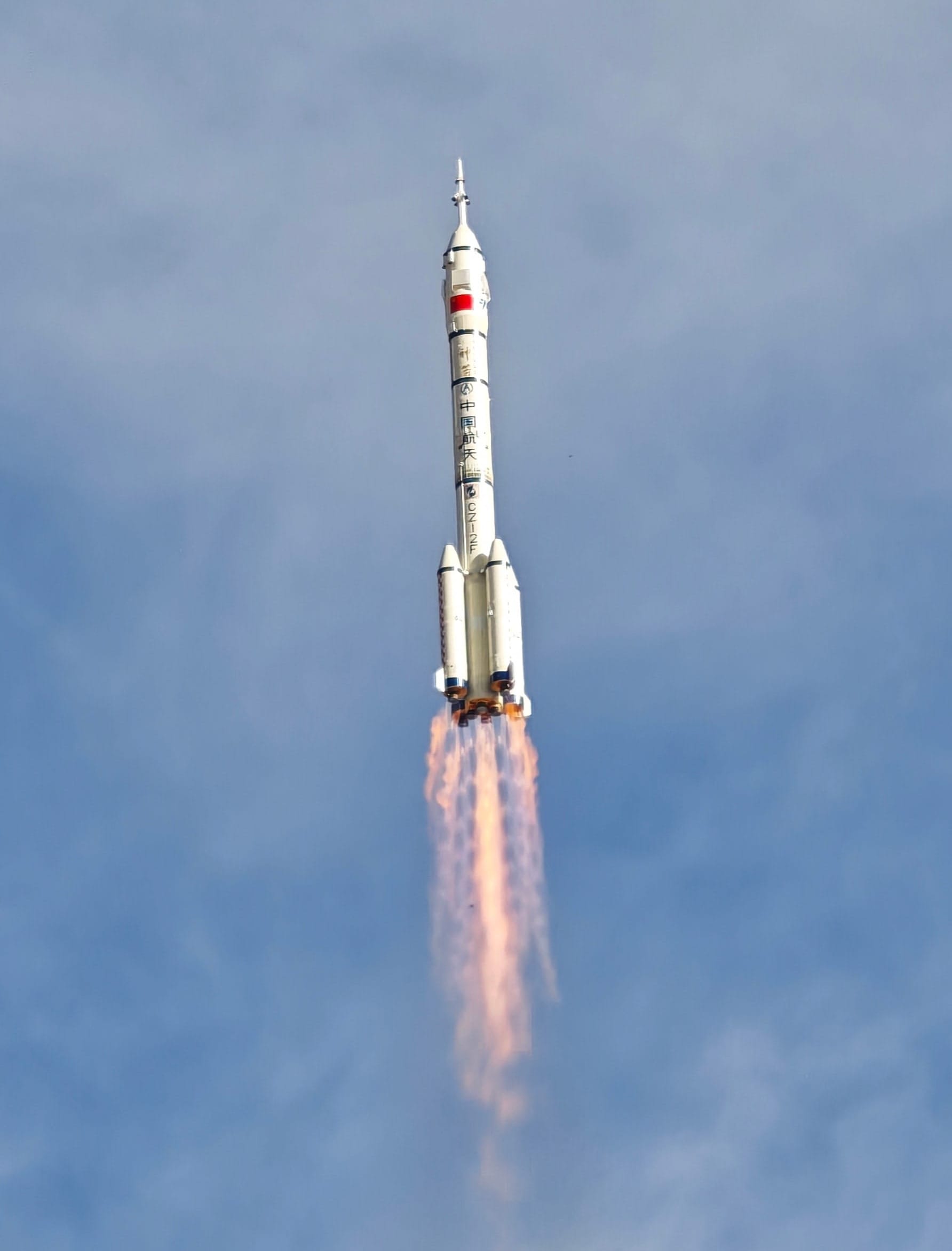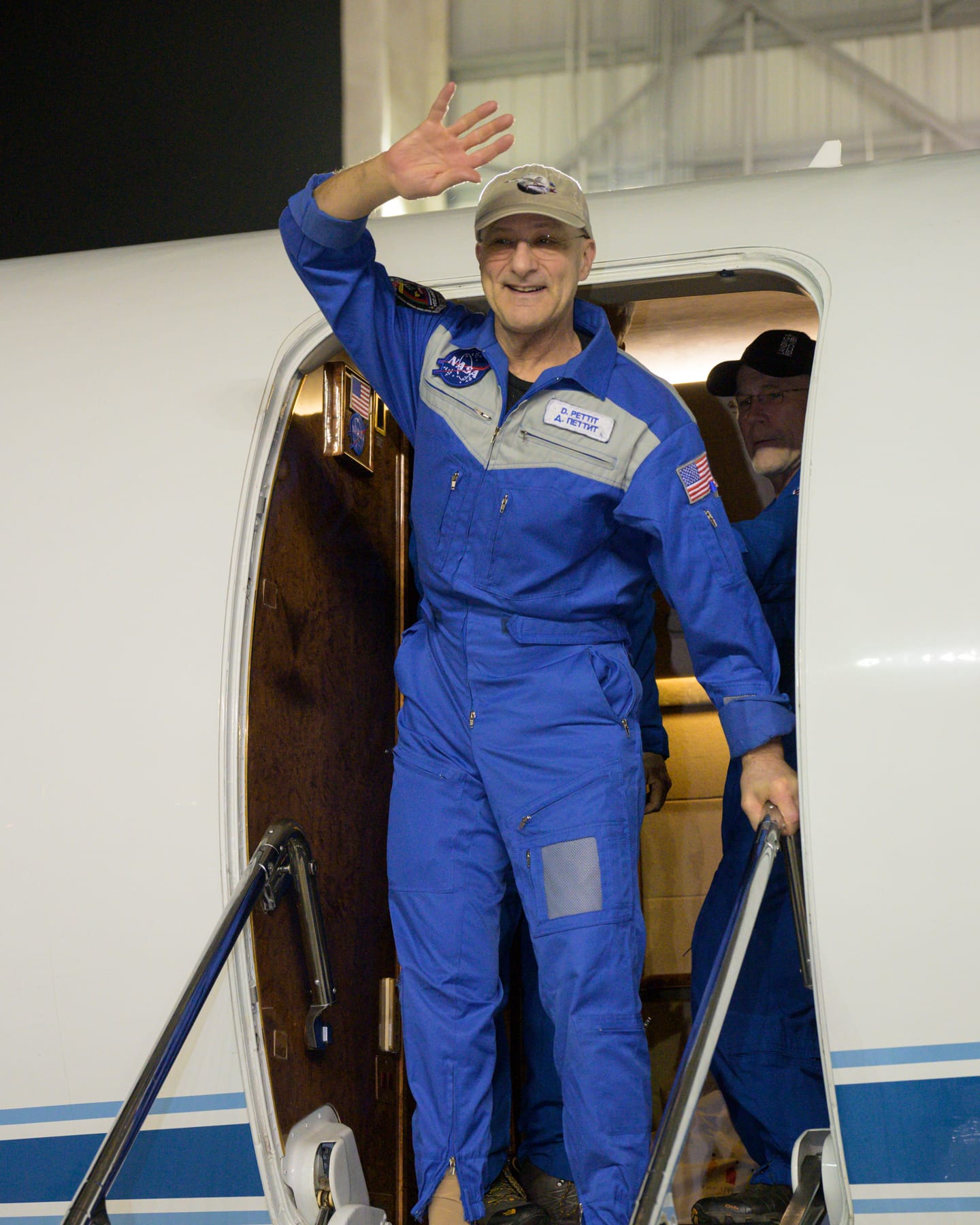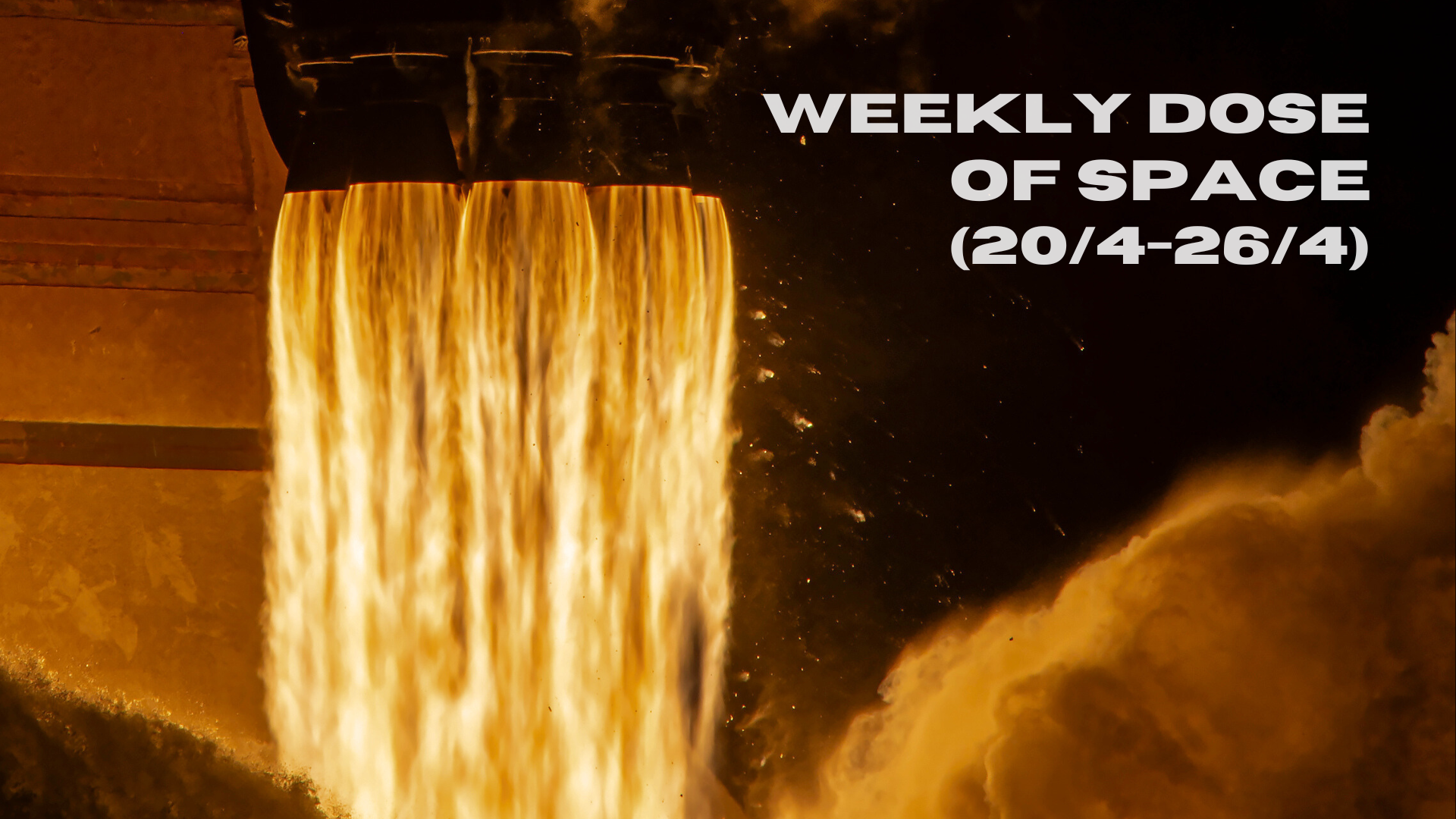Table of Contents
Welcome back to Weekly Dose of Space! This week, yet again, had five launches taking place, with one carrying a crew to one of two space stations in orbit. News from the week had a Soyuz mission concluding, New Glenn preparing to fly again, and the Chang'e 8 mission gaining international payloads. As always, we'll also look ahead to what the worldwide launch schedule might look like next week.
Launches This Week
April 20th - Falcon 9 with NROL-145
A Falcon 9 launched the tenth batch of Starshield satellites, the military version of Starlink, from Space Launch Complex 4E, in California. Booster B1082 supported this mission for its twelfth flight, with a landing on the drone ship 'Of Course I Still Love You' downrange.
April 21st - Falcon 9 with CRS-32
SpaceX launched its thirty-second International Space Station resupply mission, utilizing a Cargo Dragon V2 atop of a Falcon 9 from Launch Complex 39A, in Florida. Supporting this mission was booster B1092, performing its third mission with a landing back at Landing Zone 1.

April 22nd - Falcon 9 with Bandwagon-3
SpaceX performed its third dedicated mid-inclination orbit small satellite rideshare mission from Space Launch Complex 40, in Florida, carrying South Korea's 425Sat-3, Tomorrow Companies Inc's Tomorrow-S7, and Atmos Space Cargo's Phoenix 1. B1090 was the booster supporting this mission, landing at Landing Zone 2 for its third flight.

April 24th - Long March 2F/G with Shenzhou-20
A Long March 2F/G blasted off from Launch Area 4 at the Jiuquan Satellite Launch Center carrying a Shenzhou spacecraft with taikonauts Chen Dong, Chen Zhongrui, and Wang Jie onboard. This mission is the ninth to China's Tiangong Space Station. Further details on the mission are available here.

April 25th - Falcon 9 with Starlink Group 6-74
Twenty-eight Starlink satellites were launched from Space Launch Complex 40 atop of a Falcon 9 flying to low Earth orbit. Supporting this mission was booster B1069 for its twenty-third flight, with a landing downrange on the drone ship 'A Shortfall of Gravitas'.

In Other Space News
MS-26 mission concludes after 220 days

The Soyuz MS-26 mission concluded at the very end of last week, April 20th, bringing NASA astronaut Don Pettit and Roscosmos' cosmonauts Alexey Ovchinin and Ivan Vagner back to Earth. Following health checks shortly after landing, Pettit flew back to NASA's Johnson Space Center and arrived by April 21st.
The three MS-26 crew members spent 220 days onboard the International Space Station, having launched in September 2024. With the end of the mission, Pettit completed his fourth trip to space with 590 days now spent in orbit, Ovchinin also completed his fourth spaceflight with 595 days now accumulated, while Vagner was flying for the second time with 416 days now spent in space.
While onboard the space station, Pettit conducted research relating to enhancing in-orbit metal 3D printing capabilities, advanced water sanitization technologies, exploring plant growth under varying water conditions, and investigating fire behavior in microgravity, NASA stated. Additionally as an avid photographer, many stunning images taken from space were shared throughout his mission.
New Glenn fires up ahead of second flight
Blue Origin shared on April 24th that New Glenn's second-stage, dubbed GS2, had completed a fifteen-second static fire ahead of the rocket's second flight, currently expected a few weeks from now. This test took place at Launch Complex 36 at Cape Canaveral in Florida.
Another view… https://t.co/Zu73mWk1pj pic.twitter.com/4mzkhOesqV
— Dave Limp (@davill) April 24, 2025
New Glenn's second-stage during its static fire on April 24th, via Dave Limp on Twitter.
Following the test, Blue Origin's Chief Executive Officer David Limp shared the following message on Twitter:
"January’s GS2 performed remarkably during our inaugural New Glenn launch, delivering our payload to orbit with less than 1% deviation from the target. Today, we completed a full duration 15-second hotfire test of the upper stage for our NG-2 mission. This time, we achieved enhanced performance from the BE-3U engine, increasing the maximum thrust from 173,000 lbf to 175,000 lbf per engine, further expanding New Glenn’s capabilities for our customers."
No mentions were made of the second-stage fragmenting in orbit following New Glenn's debut mission.
Chang'e 8 mission announces international payloads
The China National Space Administration announced on April 24th the ten nations, plus Hong Kong, that had been invited to participate in for the Chang'e 8 mission, set to land near the Moon's south pole around 2028. The ten partners set to join the mission are South Africa, Peru, Italy, Russia, Thailand, Bahrain, Egypt, Iran, Pakistan, Türkiye, and the International Society for Terrain-Vehicle Systems.
International experiments and hardware for the mission are currently in the development stage, which is expected to end before August 2027. Following development, hardware will be handed over to Chinese teams for work on integrating the Chang’e 8 spacecraft. Each partner is planned to provide the following experiments:
- Pakistan and the International Society for Terrain-Vehicle Systems: a lunar rover.
- Türkiye and STAR.VISION: an environmentally intelligent exploration robot.
- South Africa and Peru: a radio astronomy array.
- Italy: a laser retroreflector.
- Russia: a lunar ion and high-energy neutral particle analyzer.
- Thailand: a lunar neutron analyzer.
- Bahrain and Egypt: a lunar surface visible light and infrared video system.
- Iran: a monitor for lunar electric potentials.
- Hong Kong: a Moon-based multi-function robot and mobile charging station on the surface.
What to Expect Next Week
April 27th - Long March 3B/E with a to-be-announced payload
A Long March 3B/E is expected to launch from the Xichang Satellite Launch Center, possibly carrying the TJSW-18 satellite to a geostationary transfer orbit.
April 27th - Falcon 9 with Starlink Group 11-9
Twenty-seven Starlink satellites are planning to be delivered to low Earth orbit by a Falcon 9 flying out of Space Launch Complex 4E.
April 28th - Falcon 9 with Starlink Group 12-23
SpaceX is planning to launch more Starlink satellites to low Earth orbit atop of a Falcon 9, flying from Space Launch Complex 40.
April 28th - Firefly Alpha for 'Message in a Booster'
Firefly Aerospace is planning to launch its Alpha rocket to low Earth orbit from Space Launch Complex 2W, in California, with a satellite from Lockheed Martin.
April 28th - Long March 5B with GuoWang Group 03
A Long March 5B is preparing to launch from Launch Complex 101 at the Wenchang Space Launch Site to a polar orbit, possibly carrying another ten satellites for the GuoWang mega-constellation.
April 29th - Atlas V with KA-01
An Atlas V is preparing to launch from Space Launch Complex 41, in Florida, carrying the first twenty-seven satellites for Amazon's Kuiper internet mega-constellation to low Earth orbit.
April 29th - Vega-C with Biomass
A Vega-C is preparing to launch from Ensemble de Lancement Vega at the Guiana Space Centre carrying the Biomass spacecraft, which will measure the density of carbon stored in the world's forests, to sun-synchronous orbit.
May 1st - Falcon 9 with Starlink Group 6-75
With another batch of Starlink satellites, a Falcon 9 is expecting to fly to low Earth orbit from Space Launch Complex 40.
May 1st - Falcon 9 with Starlink Group 15-3
Yet another Falcon 9 is planning to launch from Space Launch Complex 4E carrying a batch of Starlink satellites to low Earth orbit.







